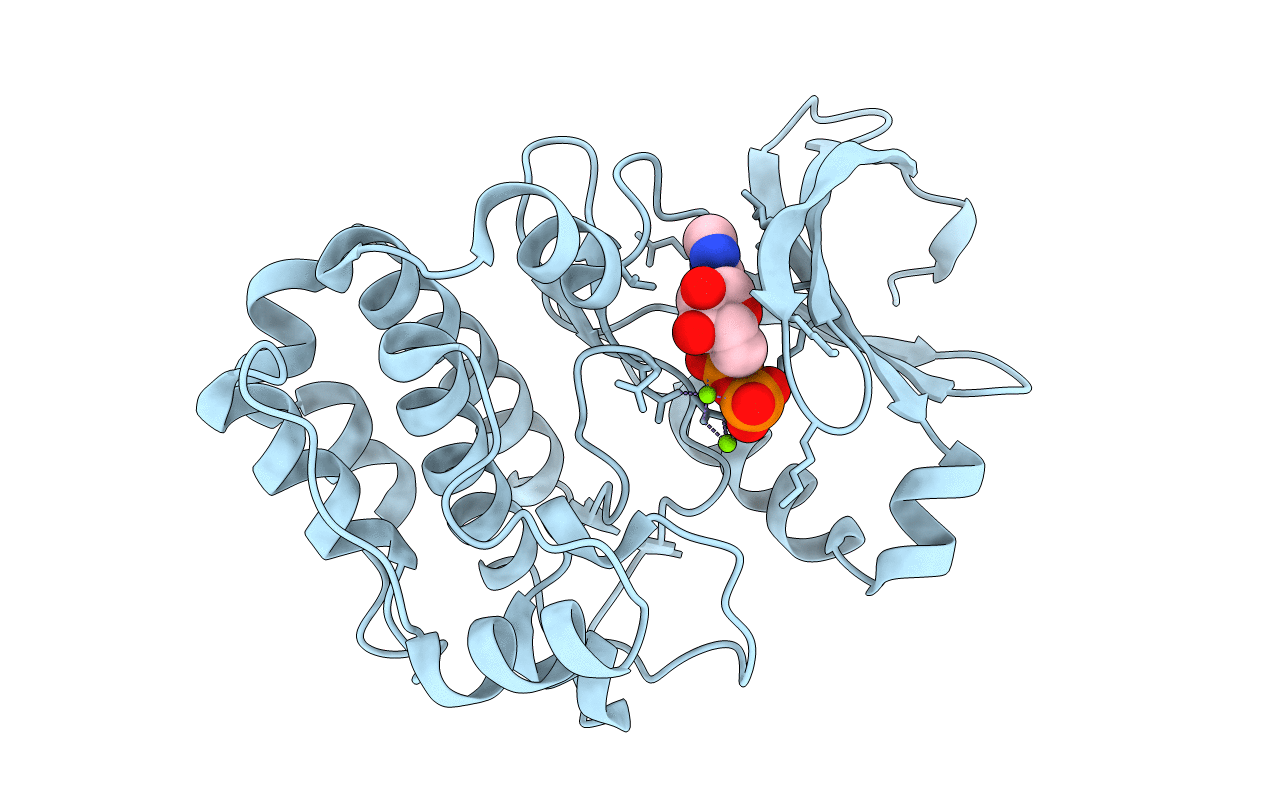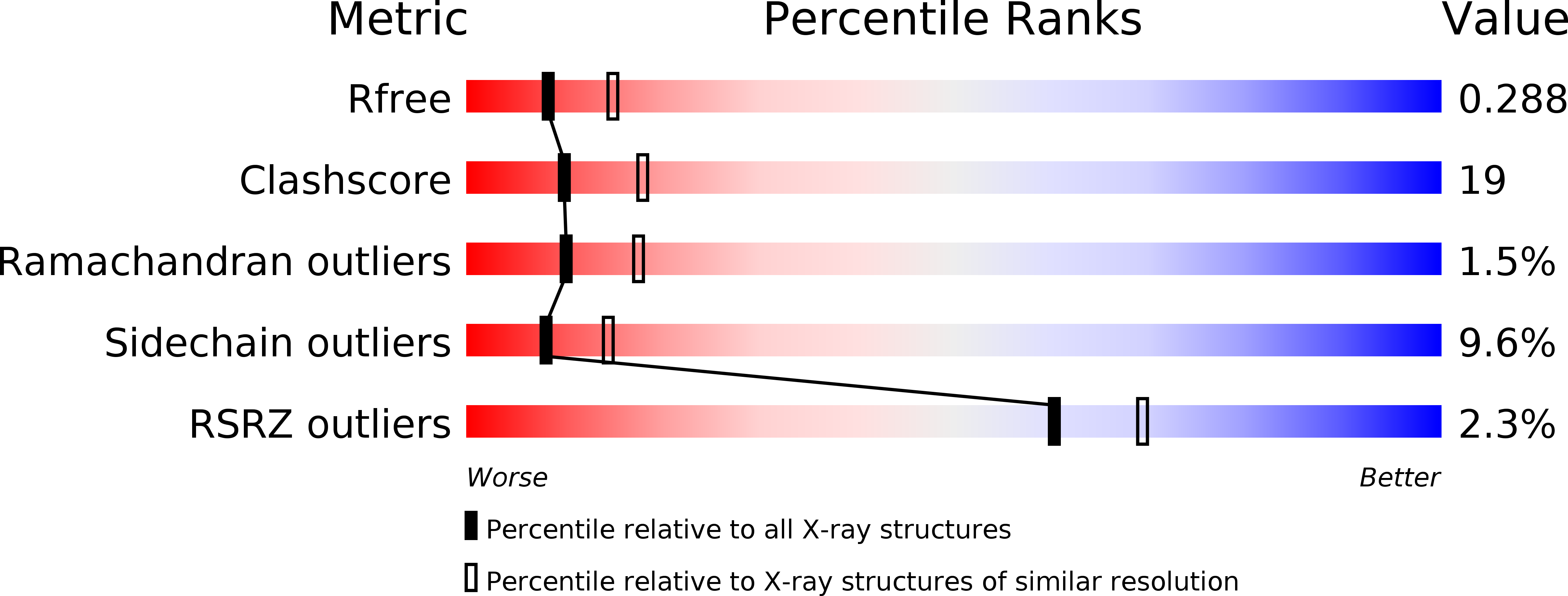
Deposition Date
2003-08-06
Release Date
2003-10-30
Last Version Date
2024-11-20
Entry Detail
PDB ID:
1OL7
Keywords:
Title:
Structure of Human Aurora-A 122-403 phosphorylated on Thr287, Thr288
Biological Source:
Source Organism:
HOMO SAPIENS (Taxon ID: 9606)
Host Organism:
Method Details:
Experimental Method:
Resolution:
2.75 Å
R-Value Free:
0.29
R-Value Work:
0.25
R-Value Observed:
0.25
Space Group:
P 61 2 2


